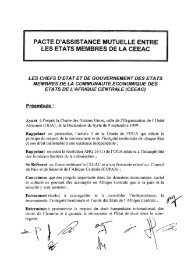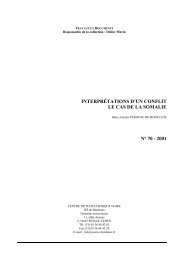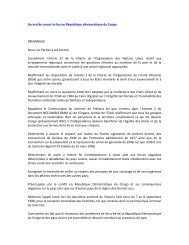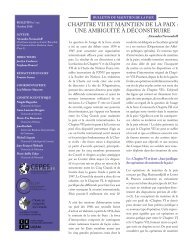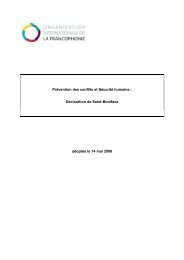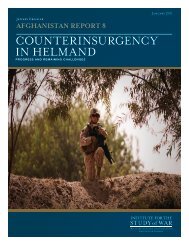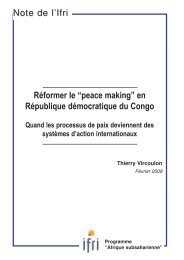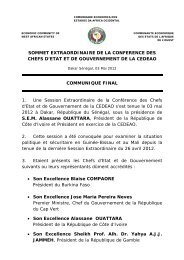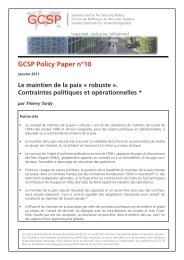engaging fragile states - Woodrow Wilson International Center for ...
engaging fragile states - Woodrow Wilson International Center for ...
engaging fragile states - Woodrow Wilson International Center for ...
You also want an ePaper? Increase the reach of your titles
YUMPU automatically turns print PDFs into web optimized ePapers that Google loves.
How Can Decision-Makers<br />
Use Global Data?<br />
How can these findings about state fragility or resilience in<strong>for</strong>m concrete decisions?<br />
The discussion points to the need to carry out regular inspections of<br />
the pillars on which <strong>states</strong> rest. The speakers concurred that the phenomenon<br />
of state failure needs to be framed as a gradually unfolding process over time<br />
rather than as a final end state at a particular moment in time. Decision-makers<br />
need not wait until all the indicators dramatically worsen and alarm bells go off<br />
that warn of total collapse. Once a state has reached large-scale violent conflict,<br />
their options are fairly limited and highly costly. Action requires a huge ef<strong>for</strong>t<br />
on the part of an intervening state and is likely to generate political ill will both<br />
at home and abroad.<br />
Much can be done in order to keep a state from reaching such extremes. By<br />
the same token, it is artificial to look at the processes of fragility in isolation from<br />
normal international <strong>for</strong>ces and policies toward <strong>states</strong> at non-crisis times. Research<br />
provides guidance <strong>for</strong> addressing <strong>states</strong> that face the possibility of failure but have<br />
not reached total collapse. Carment suggested an ongoing tracking procedure is<br />
needed that anticipates earlier turning points in advance of the onset of violent<br />
conflict or total collapse, looks <strong>for</strong> points of leverage, and considers sequencing<br />
and timing <strong>for</strong> engagement. Such a system would monitor indicators of the dimensions<br />
that define a state’s strength or fragility, such as legitimacy, authority,<br />
and capacity. All these dimensions need to be assessed to judge state fragility and<br />
to develop plans to cope with fragility by preventing further decay. Relevant early<br />
warning systems already operate in many international organizations and governments.<br />
Detailed diagnostic tools <strong>for</strong> assessing the fragility and conflict of a particular<br />
country are also available. 5<br />
Measuring such components would generate early warnings that can trigger<br />
ef<strong>for</strong>ts to keep imbalances in a state’s condition from worsening. The measures<br />
also can be used <strong>for</strong> rebuilding <strong>states</strong> in a situation where conflict has already occurred<br />
and government has broken down. Although it takes time to collect such<br />
data <strong>for</strong> many countries, ongoing monitoring of the factors in real time is needed<br />
to identify changes in a state’s risk and resiliency factors and the balance between<br />
the two.<br />
A particular state’s profile in terms of those factors provides clues about the<br />
main soft spots that warrant the most attention, and thus the most cost-effective<br />
entry points <strong>for</strong> domestic or international ef<strong>for</strong>ts. Because <strong>states</strong> become <strong>fragile</strong> or<br />
fail in different ways, those entry points will differ. As Goldstone suggested, varied<br />
24 | Engaging Fragile States: An <strong>International</strong> Policy Primer



